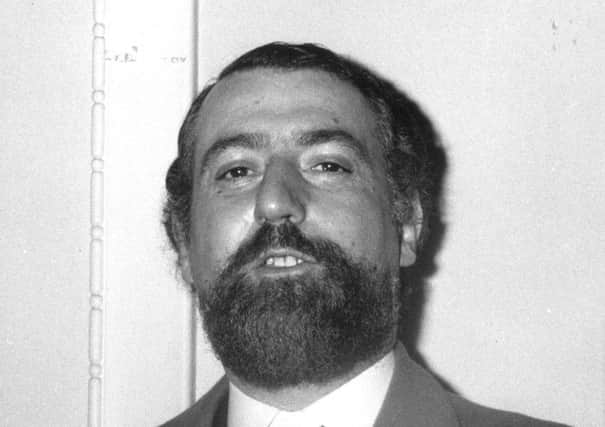Obituary: Harry Hyams, property developer


A reclusive multi-millionaire property developer, Harry Hyams rose from humble beginnings and went on to change the London skyline for good when he oversaw the construction of the imposing 35-floor tower, Centre Point, right in the heart of the capital’s West End.
Described by some as the “daddy of all developers”, he fundamentally invented property development as it is known today. Fellow property tycoon Sir Stuart Lipton credited him as “the first man to recognise the importance of skilled planning and development.”
Advertisement
Hide AdAdvertisement
Hide AdHyams made his fortune during the post-war years and set about taking advantage of the many opportunities provided by Second World War bomb sites in prime locations within the capital.
His formula for success was simplicity. He concentrated on central London office space and aimed to attract a single tenant for each building, who would take on responsibility for all repairs and insurance. This rationalised approach meant that, even at its peak, Hyams was able to manage his entire empire with a staff of just six people.
Although the 398ft construction of Centre Point is now regarded as one of the most important developments in post-war Britain, at the time it sparked much disagreement. Designed by George Marsh and Richard Seifert & Partners, it was constructed between 1963 and 1966 and cost £5.5m. The tower, Grade II-listed in 1995, was seen as a classic expression of the bright and brash “pop architecture” of the 60s, inspired distantly by Le Corbusier and Milan’s 32-storey Pirelli tower.
Born in Hendon, west London in 1928, Harry John Hyams was the son of a Jewish bookmaker. After a private school education where he was friends with Graham Hill, aged 17, he joined a firm of estate agents before later switching to property development.
Aged 31, Hyams and the builder George Wimpey bought Oldham Estates, an obscure Lancashire-based property company, for £50k, which was used as a vehicle for a range of ambitious real estate ventures in London. Within two years, company assets were worth £6.5m and by 1963 their value had risen to £23m.
In 1987, Hyams’ company was taken over by property giant MEPC who paid £620m, making him £150m; when MEPC was bought in 2000, he pocketed a further £98m.
An intensely private man, Hyams found ever more eccentric ways of avoiding publicity. As his company was owned by shareholders, he deliberately held AGMs when he thought attendance might be low, for example, 4:15 pm on New Year’s Eve.
He retired to Ramsbury Manor, near Marlborough, in rural Wiltshire with his wife Kay, whom he had married on Christmas Eve, 1954; she died in 2011. Paying £650,000, he spent further millions restoring it. He enjoyed classic cars, powerboat racing and horseracing and went regularly to the opera and on exotic holidays.
Advertisement
Hide AdAdvertisement
Hide AdHe was also prone to impulse purchasing; on one occasion, he bought the 212-ft Shemara, one of the world’s biggest yachts, but did not put to sea for over three decades; he purchased two boxes near the Queen’s at Epsom racecourse though never used them. He also made anonymous gifts to football clubs and his parish council.
Described as a “real gentleman”, Hyams was also one of Britain’s most avid art collectors with the best privately held collection. He loaned of his most valuable pieces anonymously to art galleries for the public’s benefit, including Turner’s ‘The Bridgewater Sea Piece’, one of the artist’s finest seascapes, which has been on loan to the National Gallery for almost 30 years.
In 2006, the Hyams were victims of what is thought to be the most valuable domestic burglary in British history, when the Johnson Gang made off with £80m worth of antiques. The perpetrators were eventually captured and imprisoned for a total of 49 years but only half the stolen goods were recovered.
In January 2015, Hyams used the law to assert his rights, objecting to plans by Stefan Persson, the billionaire owner of the H&M fashion chain, to build a mansion next door to Ramsbury.
He argued that this would infringe his game shooting rights. His objection was rejected in the High Court.
His outward eccentricities and odd controversies belied the steely determination and sharp commercial intelligence that lay within. Centre Point remained among his proudest achievements with the tower continuing to cast its imposing shadow over the junction between Oxford Street and Tottenham Court Road.